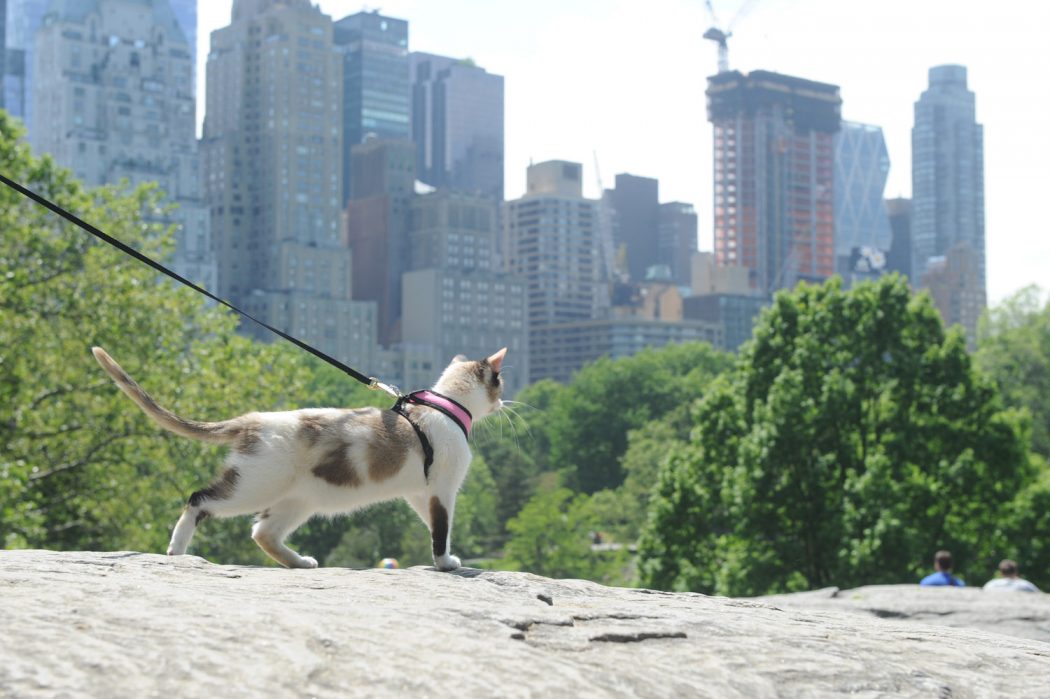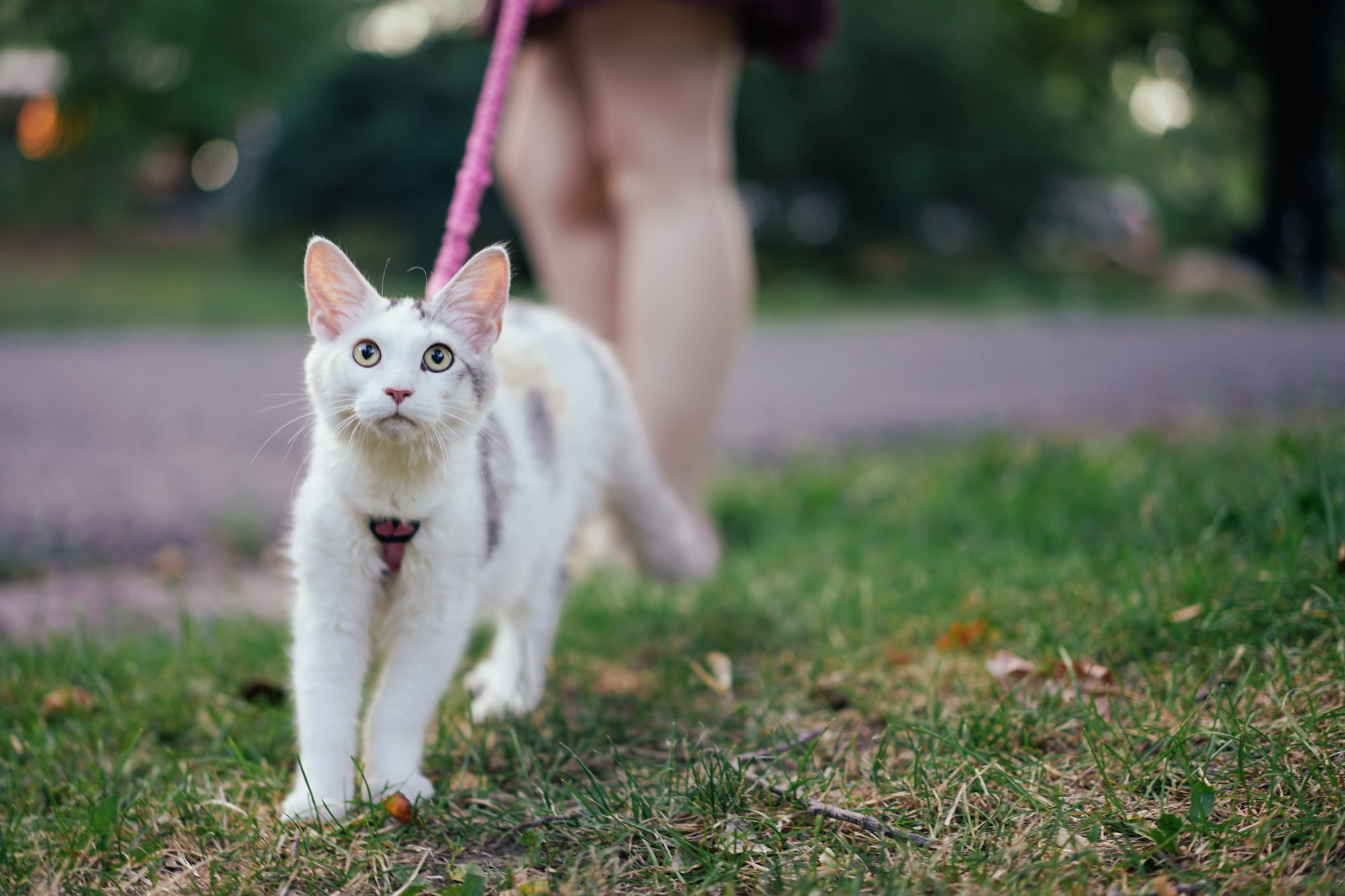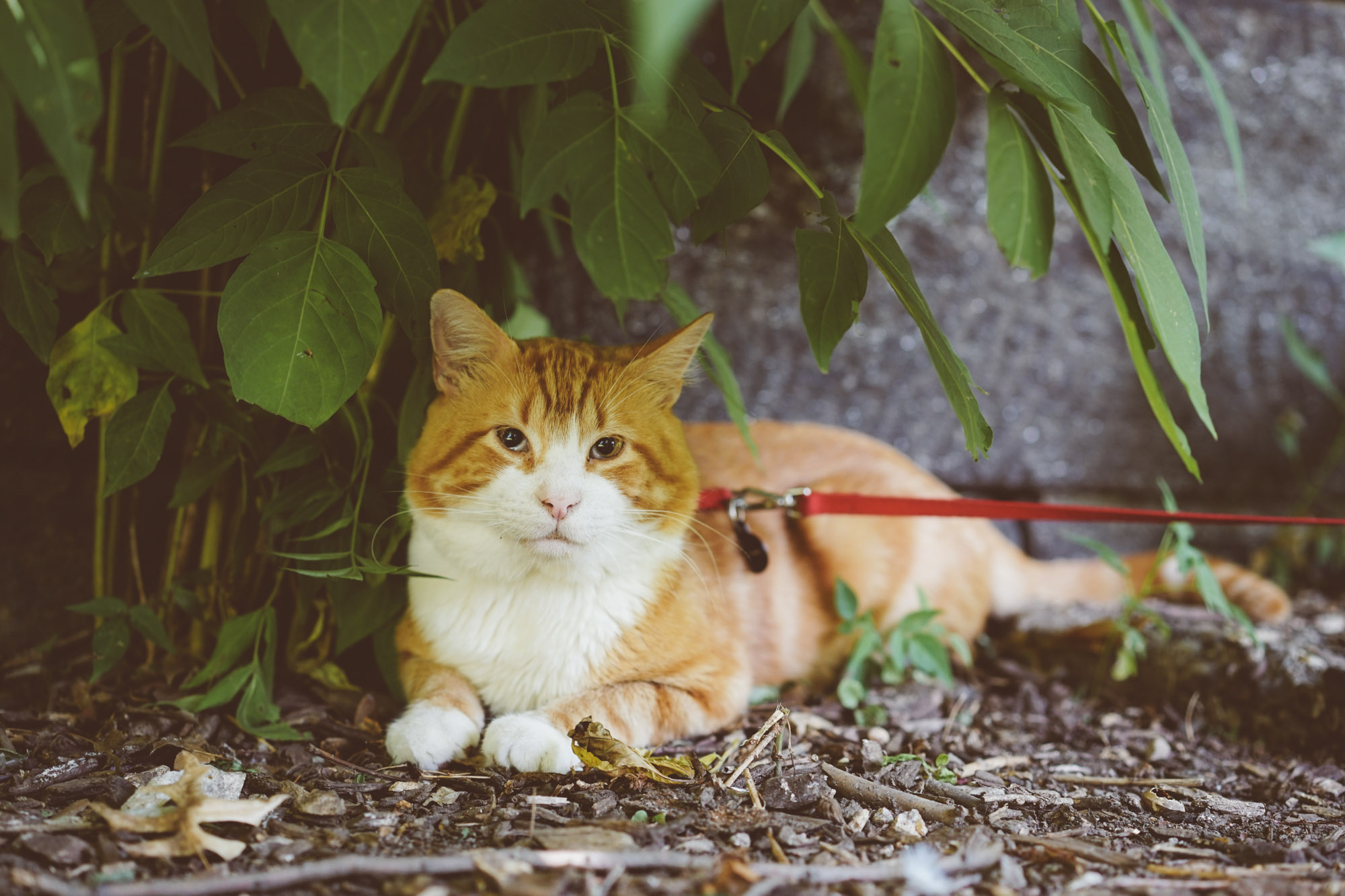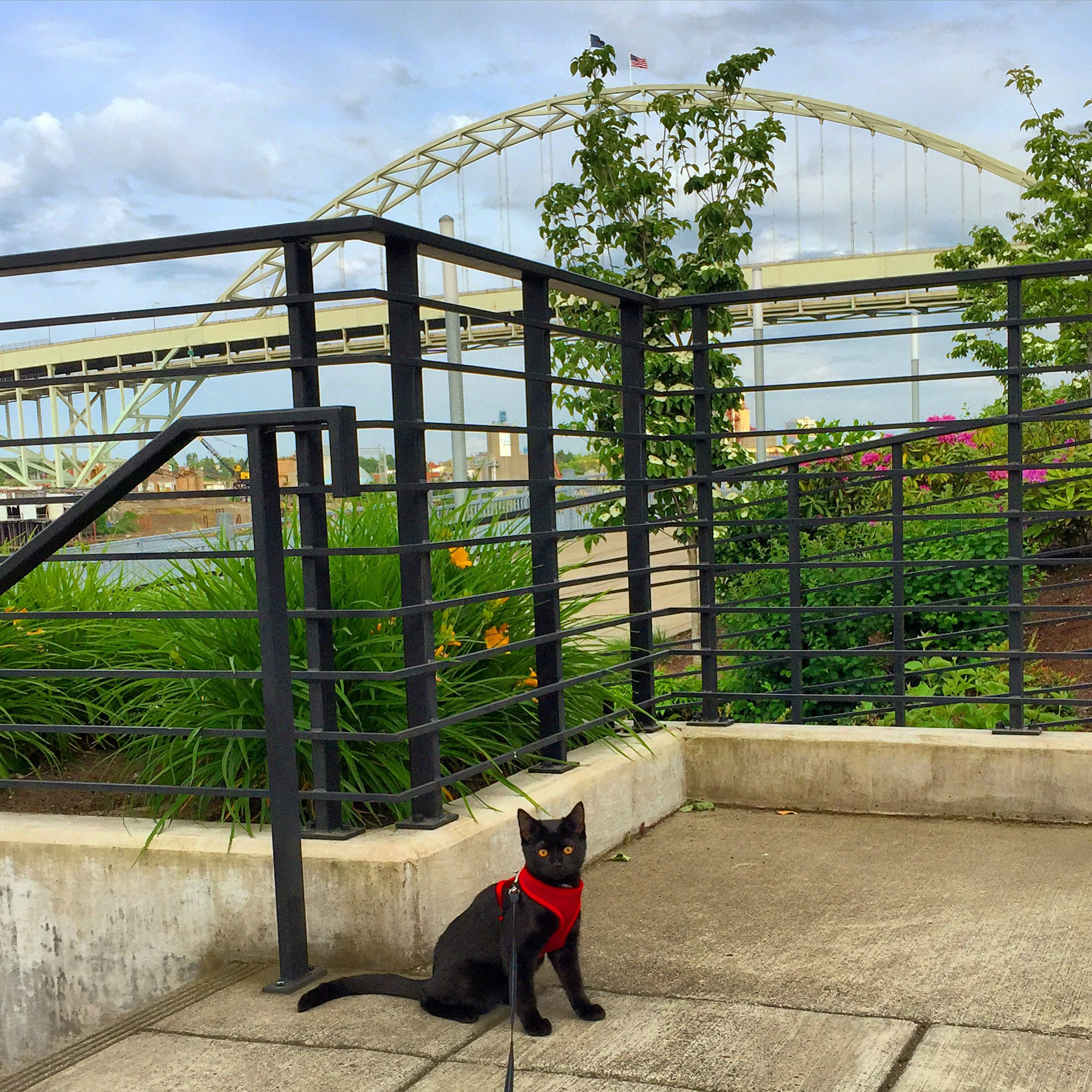While some adventure cat owners take their kitties on short hikes, others live in more urban environments and don’t have easy access to wilderness areas. And many cat owners don’t have backyards or even walkable neighborhoods that are safe for their feline friends to explore.
But just because you have limited outdoor space doesn’t mean your cat is destined to remain indoors. Even city kitties can be adventure cats if they’re comfortable outside.
“We didn’t like the idea of keeping our cat locked up in our small New York apartment all day,” said Brooklyn resident Nate Hunter, who walks his Maine Coon, Chickpea. “Leash training our cat and taking her to the park allows her to experience nature without the risk of getting injured or lost.”
Think your kitty would like to explore the concrete jungle? Read on for tips on how he or she can join the ranks of the adventure cats even if you don’t own a pair of hiking boots.
1. Start small.
Even if you never plan to hit the trail, the basics of leash training remain the same, which means practice indoors to see if your cat is comfortable in a harness. And when you and your cat are ready to venture outside the first few times, keep it close to home.
Green space may be hard to come by, but you can use what’s available to you. That may be a balcony, a rooftop garden, a courtyard or even the front stoop — any outdoor area that’s close enough that you can quickly get back indoors if your cat gets spooked.
“Being in a city, we had to be creative with where to take our cat,” said Hunter. “We didn’t like the idea of bringing her right onto the street because we thought she might get scared. We have access to our apartment roof, so we decided to start Chickpea’s outdoor journey there. It’s much quieter, and we’re typically alone when we bring her out.”
If you venture to a rooftop, be sure to keep that curious cat away from the ledge, and if you have a small porch or balcony, consider transforming it into a catio. “You can create a catio even in very small outdoor space,” pet columnist Darcy Matheson told Adventure Cats. “You can enclose your patio with some finer mesh. It may be unsightly, but it means your cat is not going to be at risk of falling off your balcony.”
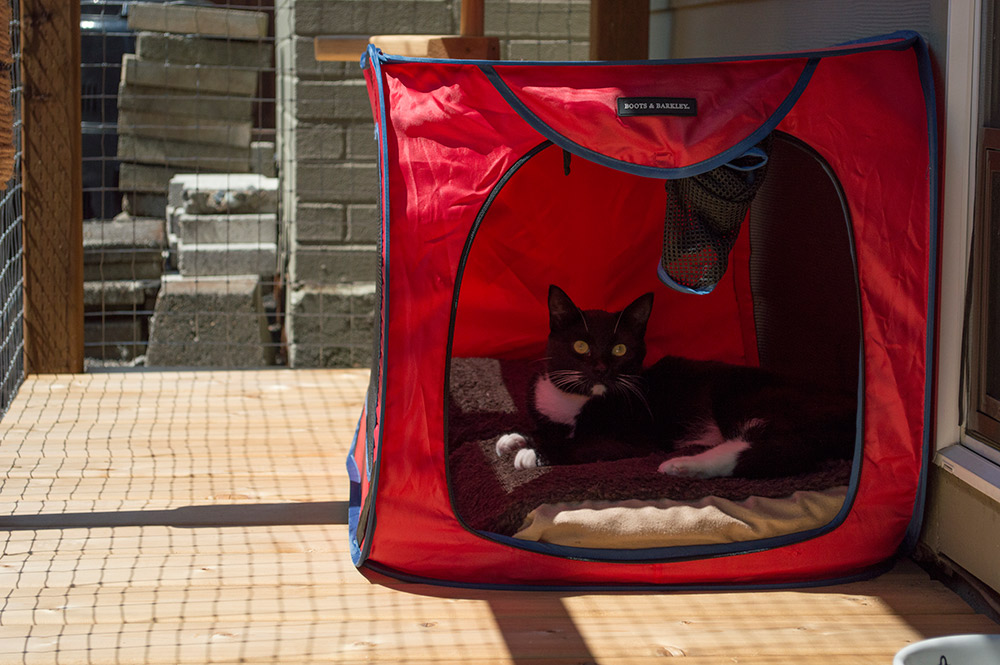
Some mesh around a balcony or a pop-up tent on a patio is a great place for a catnap. (Photo: Tinsley Hunsdorfer/Audubon Society of Portland)
2. Scout locations.
Once your cat is comfortable exploring close to home, he or she may be ready to venture into larger outdoor areas, such as a city park. But before you get out the carrier and purchase a subway ticket, do a little location scouting on your own. For example, determine which areas of the park get the least foot traffic, what times it’s the least crowded, where you’re least likely to run into off-leash dogs or impromptu Ultimate Frisbee games, etc.
“Find a quieter park area that doesn’t have a lot of kids running around or dogs so your cat is less likely to be spooked,” suggests New York City resident Catie Savage who walks her cats, Ziggy and Lambchop.
Also, consider how noisy the area is. Cats have very sensitive ears and may not be comfortable exploring if the park is full of screaming children or near a busy street.
“The city is a loud and scary place for a little animal,” said Andrea Rice who takes her cat, Bela, for daily walks in Brooklyn. “For the most part, Bela is quite brave, but she definitely hates the street sweeper. We don’t go far beyond our neighborhood block since we’re surrounded by busy streets.”
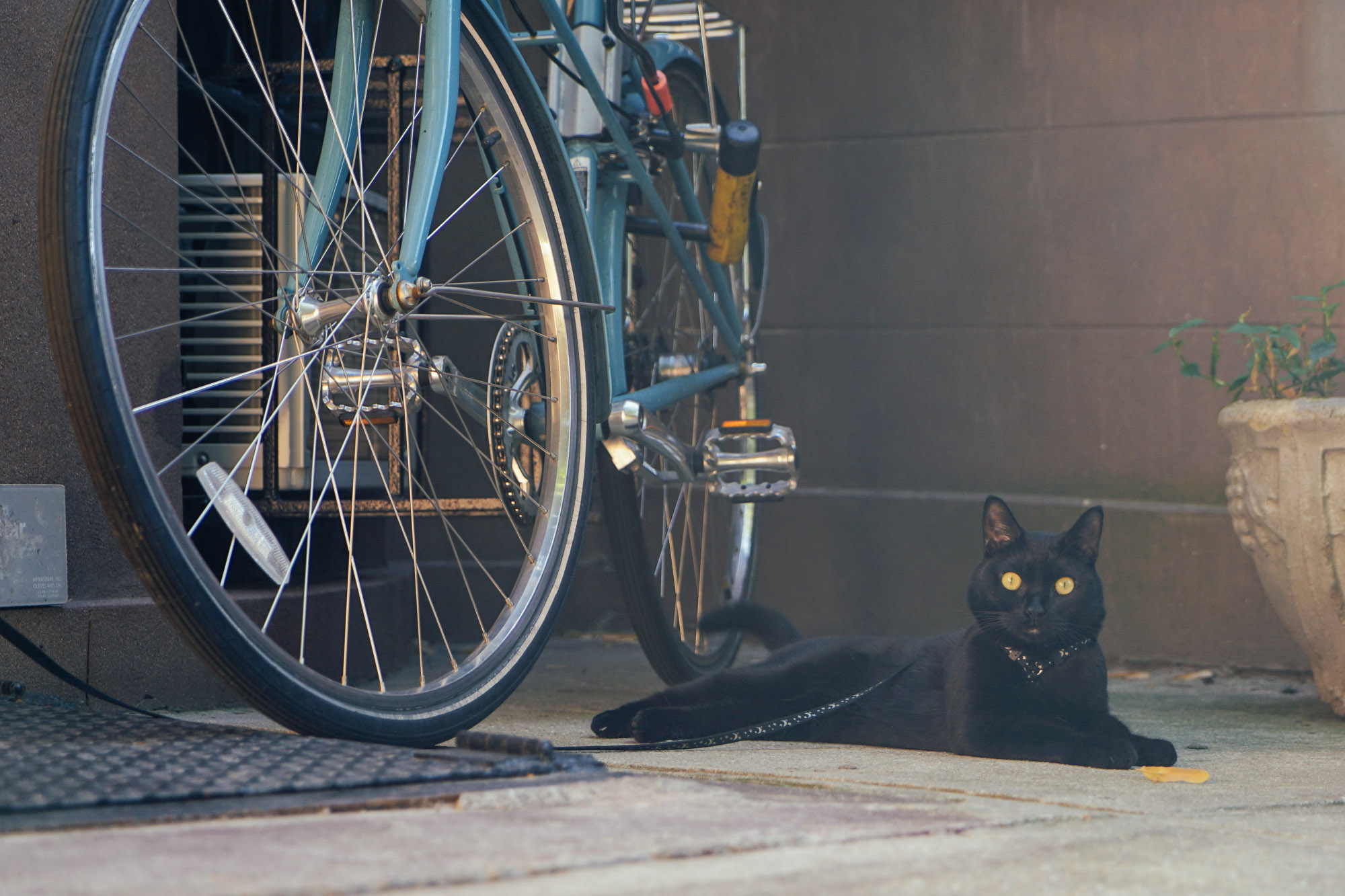
Bela keeps her adventures close to home and rarely leaves her Brooklyn block. (Photo: Cody Wellons).
3. Consider transportation.
Check the routes and types of transportation that would be necessary to take your cat to a park or other outdoor area. The perfect park may not be quite so perfect if it requires long bus rides or multiple train changes.
And keep in mind that some cats travel better than others.
“I wouldn’t take Pan out so much if he was bothered by noise, but he honestly couldn’t care less,” New York City resident Rhiannon Lattimer said. “He travels on the subway, buses. I’ve sat outside busy bars. He’s just uniquely chill, I think.”
Some cats may never be comfortable leaving the comfort of home, so if your cat seems scared or is easily spooked, keep the adventures close to home or indoors.
4. Provide your kitty with a safe place.
When you head out for an adventure even close to home, bring along a crate, carrier or backpack that your cat can retreat to if he or she becomes spooked.
“Pan loves his Sherpa carry bag, which I think helps. As soon as the harness is on, he jumps in. He even sits inside it indoors. It’s his safe place,” Lattimer said.
5. Pay attention to where you’re walking.
Streets and sidewalks can be littered with trash, broken glass and dangerous chemicals like antifreeze, which can be deadly to cats if they lick it off their paws.
“I have to watch where Bela’s walking when we’re on the sidewalk since there could be broken glass or other harmful debris,” Rice said.
6. Watch for man’s other best friend.
You’re likely to encounter dogs in parks and on sidewalks, so keep an eye on your surroundings and be prepared to pick your kitty up should you spot a canine coming around the corner.
“Portland is very pet-friendly, which is great, but we had an incident with a dog owner who didn’t have his pup on a leash,” said Melissa Capone who takes her cat, Albie, on walks. “Albie got a pretty big scare, and this has put me on much higher alert when we are walking in a downtown area. I usually scoop her up when I see any dogs.”
7. Consider a stroller.
Your kitty may not be up for a trip on the subway, but he may enjoy a stroller ride. Pet strollers are similar to strollers designed for human infants, but they feature zipped enclosures so your fur baby can view the world through mesh windows.
Brooklyn resident Tina Ferraioli notes that pushing a cat in a stroller “definitely draws a lot of attention,” but kitties that take regular stroller rides reap the same rewards as leash-walked cats. (That’s why many of the cats at Best Friends Animal Society get chauffeured around the sanctuary.)
“I have a backpack and a stroller made for cats,” said veterinarian Jennifer Stokes, who hikes and paddles with her cat Simon. “I got a stroller because I think it is safer and provides Simon with a safe place when something makes him nervous. I actually never walk him without it. We even did a 5K together!”
[separator type=”thin”]
Scroll through the gallery at the top to see more photos of adventurous city kitties.

